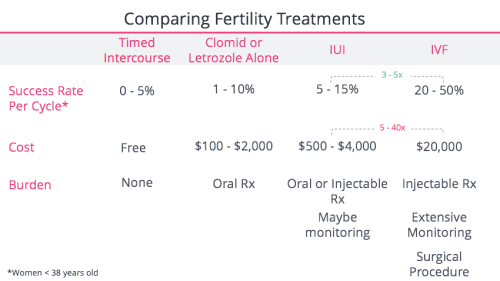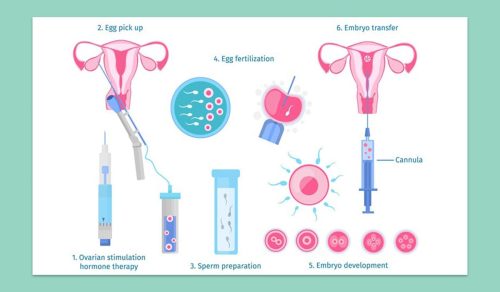How Expensive Is IVF? A Deep Dive into Costs, Options, and What You Need to Know
In vitro fertilization (IVF) is a life-changing option for many hoping to start a family, but the price tag can feel like a mountain to climb. If you’ve ever wondered just how expensive IVF really is—or how to make it work for you—you’re not alone. Millions of people search for answers every year, trying to figure out if this journey is within reach. The good news? While IVF isn’t cheap, there are ways to understand the costs, plan smartly, and even find some relief. Let’s break it all down together—everything from the base price to hidden fees, insurance quirks, and fresh ideas that could save you money.
The Big Picture: What Does IVF Actually Cost?
IVF isn’t a one-size-fits-all price. In the U.S., a single cycle typically runs between $12,000 and $25,000, depending on where you live, the clinic you choose, and what your treatment plan looks like. That’s just the starting point, though—extras like medications, genetic testing, or multiple cycles can push the total much higher. For the average person, it’s not uncommon to spend $50,000 or more by the time they bring a baby home.
Why such a wide range? Think of IVF like building a custom house. The foundation (the basic procedure) has a set cost, but the add-ons—fancy windows, a bigger garage, or a rooftop deck—are where the numbers start to climb. For IVF, those “add-ons” might be fertility drugs, embryo freezing, or specialized tests. Location matters too. A clinic in New York City or Los Angeles might charge more than one in a smaller town, thanks to higher overhead costs like rent and staff salaries.
Here’s a quick snapshot of the baseline costs in 2025, based on recent data from fertility clinics and industry reports:
- Basic IVF Cycle: $12,000–$15,000 (includes egg retrieval, fertilization, and embryo transfer)
- Medications: $3,000–$5,000 per cycle
- Initial Consultation and Tests: $250–$500
- Total for One Cycle (no extras): $15,000–$20,000
But here’s the kicker: most people don’t get pregnant on the first try. Success rates hover around 40% for women under 35, dropping as age goes up. That means two or three cycles aren’t unusual, and suddenly you’re looking at $30,000–$60,000. It’s a lot to swallow, but understanding the pieces can help you feel less overwhelmed.
Breaking Down the Costs: What Are You Actually Paying For?
IVF isn’t just one bill—it’s a bunch of smaller ones rolled together. To get a handle on the expense, let’s unpack what’s inside that $15,000–$20,000 price tag for a single cycle.
The Core Procedure
This is the heart of IVF: stimulating your ovaries, retrieving eggs, fertilizing them in a lab, and transferring an embryo back into the uterus. Clinics usually bundle these steps into a “cycle fee” of $10,000–$15,000. It covers:
- Ultrasounds and blood tests to monitor your progress
- The egg retrieval surgery (done under light anesthesia)
- Lab work to fertilize the eggs and grow embryos
- The embryo transfer procedure
Some clinics throw in a few extras, like a follow-up visit, but don’t count on it. Always ask what’s included—vague answers could mean surprise charges later.
Medications: The Sneaky Cost Climber
Fertility drugs are a big chunk of the bill, and they’re usually separate from the cycle fee. These meds—think injections like Follistim or Gonal-F—help your ovaries produce multiple eggs. Depending on your body’s response, you might spend $3,000–$5,000 per cycle. Older patients or those with lower ovarian reserve might need higher doses, pushing costs closer to $7,000.
✔️ Tip: Shop around for meds. Specialty pharmacies or online suppliers sometimes offer discounts that clinics don’t.
Testing and Prep Work
Before you even start, there’s an upfront cost for consultations and diagnostic tests. Expect to pay $250–$500 for things like:
- Blood work to check hormone levels
- Ultrasounds to assess your ovaries
- Semen analysis for your partner (if applicable)
These aren’t optional—they’re how doctors figure out your game plan. Skimp here, and you might miss something that affects your success.
The Extras That Add Up
Here’s where things get tricky. Many couples opt for additional services to boost their chances, and each one tacks on more expense:
- Preimplantation Genetic Testing (PGT): $3,000–$6,000 to screen embryos for genetic issues
- Embryo Freezing: $1,000–$2,000 upfront, plus $300–$600 per year for storage
- Intracytoplasmic Sperm Injection (ICSI): $1,000–$2,000 if sperm needs a little help fertilizing the egg
- Donor Eggs or Sperm: $10,000–$20,000 if you’re using donated material
These aren’t must-haves for everyone, but they’re common enough that you should budget for at least one or two.
Why Is IVF So Expensive Anyway?
It’s easy to look at these numbers and wonder why IVF costs more than a used car. The answer lies in the resources it takes to make it happen. Picture a high-tech lab with skilled embryologists, top-notch equipment, and a team of doctors working around the clock. That’s what you’re paying for.
- Specialized Staff: Fertility doctors, nurses, and lab techs aren’t cheap. Years of training go into handling delicate eggs and embryos.
- Advanced Tech: From incubators to microscopes, the gear in an IVF lab is cutting-edge and pricey to maintain.
- Time and Precision: A single cycle involves weeks of monitoring and lab work. It’s not a quick in-and-out procedure.
- Low Success Rates: Clinics have to cover the cost of failed cycles, which keeps prices high for everyone.
Plus, there’s no mass production here. Each patient gets a custom treatment plan, which drives up the labor and resources needed. It’s not fair, but it’s the reality of a process that’s still part science, part art.
Does Insurance Help? The Coverage Conundrum
If you’re hoping insurance will swoop in and save the day, brace yourself for mixed news. In the U.S., IVF coverage is spotty at best. Only 21 states have laws mandating some form of fertility treatment coverage as of 2025, and even then, IVF isn’t always included. Where it is, there are often caps—like a lifetime limit of $15,000 or two cycles—which might not cover your full journey.
For example, California recently passed a law requiring large insurers to cover IVF starting in 2025, but smaller plans and self-insured employers can opt out. New York offers up to three cycles for some plans, while states like Texas and Florida leave it entirely up to the insurance company. If you’re in an uncovered state, you’re likely paying out of pocket.
❌ Heads-Up: Even with coverage, copays, deductibles, and uncovered extras (like PGT) can still leave you with a hefty bill.
✔️ Action Step: Call your insurer and ask specific questions: “Does my plan cover IVF? What’s the lifetime max? Are meds included?” Get it in writing if you can.
Interactive Quiz: Will Your Insurance Cover IVF?
Take a quick moment to see where you stand:
- Do you live in a state with mandated fertility coverage (e.g., NY, CA, IL)?
- Yes / No
- Does your employer self-insure (common with big companies)?
- Yes / No
- Does your plan explicitly list IVF as a benefit?
- Yes / No
If you answered “No” to two or more, you’re likely on your own. Time to explore other options!
Hidden Costs You Might Not Expect
Beyond the obvious, there are sneaky expenses that catch people off guard. These can turn a “manageable” budget into a financial headache if you’re not prepared.
Travel and Time Off
If the best clinic isn’t nearby, you might need to travel for appointments. Gas, flights, or hotel stays add up fast—think $500–$2,000 per cycle if you’re crossing state lines. Plus, IVF means multiple doctor visits over weeks. If you don’t have paid leave, lost wages could hit hard.
Emotional Support
The stress of IVF is real, and many turn to therapy or support groups. A session with a counselor might cost $100–$200, and while it’s not mandatory, it can be a lifeline.
Failed Cycles and “Plan B”
Not every cycle works. If it fails, you might need a frozen embryo transfer (FET) later, costing $3,000–$5,000 each time. Or, if IVF isn’t an option anymore, you might pivot to adoption or surrogacy—both of which start at $30,000+.
✔️ Pro Tip: Build a buffer into your budget. An extra $5,000–$10,000 can cover surprises without derailing your plans.
How to Make IVF More Affordable: Practical Strategies
IVF’s price might feel like a brick wall, but there are ways to chip away at it. Here are some tried-and-true ideas, plus a few fresh ones you won’t find everywhere.
Shop Around for Clinics
Prices vary wildly between clinics, even in the same city. A 2023 study from the American Society for Reproductive Medicine found cost differences of up to 30% for identical services. Call around, ask for itemized quotes, and don’t be shy about negotiating—some clinics offer discounts if you pay upfront.
Look Into Financing
- Clinic Payment Plans: Many offer 0% interest for 6–12 months if you pay in full by the end.
- Fertility Loans: Companies like Future Family or CapexMD specialize in IVF financing, with rates from 5%–15%.
- Grants: Organizations like BabyQuest or the Tinina Q. Cade Foundation award $5,000–$15,000 to qualifying families.
Mini-IVF: A Cheaper Alternative?
Mini-IVF uses lower doses of meds to produce fewer eggs, cutting costs to $5,000–$7,000 per cycle. Success rates are lower (around 20% per cycle), but it’s a solid option if you’re young or have good ovarian reserve. It’s not talked about enough, but it could save you thousands.
Fertility Tourism
Countries like Mexico, Spain, or the Czech Republic offer IVF for $4,000–$8,000 per cycle, including meds. Add travel costs, and you’re still under U.S. prices. Quality varies, so research clinics with strong success rates (check the CDC’s ART database for international stats).
✔️ Quick Guide: Top 3 Affordable IVF Destinations
- Mexico: $4,500–$6,000, short flight from the U.S.
- Spain: $6,000–$8,000, high success rates
- Czech Republic: $4,000–$5,000, popular for Europeans
Tax Breaks and HSAs
In the U.S., IVF qualifies as a medical expense. If your total medical costs exceed 7.5% of your income, you can deduct the rest on your taxes. Got a Health Savings Account (HSA)? Use it—IVF is an eligible expense, and it’s pre-tax money.
The Latest Trends: What’s Changing in 2025?
IVF costs don’t stand still, and 2025 is bringing some shifts worth watching. These updates could affect your wallet—and your options.
Low-Cost Clinics Are Popping Up
A new wave of “budget” IVF clinics is emerging, offering cycles for $8,000–$10,000. They cut costs by streamlining services (fewer frills, more efficiency) and targeting younger patients with simpler needs. Look for these in urban areas or online directories like FertilityIQ.
Tech Is Dropping Prices
Automation is hitting IVF labs. Machines now handle tasks like embryo monitoring, reducing staff costs. A 2024 report from Reproductive Sciences predicts this could shave $1,000–$2,000 off cycles by 2026. It’s not widespread yet, but it’s coming.
Insurance Pushback
With states like California mandating coverage, insurance premiums might rise for everyone—think $20–$50 more per month. Posts on X show mixed feelings: some cheer the access, others grumble about the extra cost. If you’re not using IVF, it might sting a little.
Real Stories: What IVF Costs Look Like in Action
Numbers are one thing, but real life paints a fuller picture. Here are two examples—composites based on trends and data—to show how costs play out.
Case Study 1: Sarah, 32, First-Time Success
- Location: Chicago, IL
- Cycle Cost: $14,000 (basic fee) + $4,000 (meds) = $18,000
- Extras: $1,500 (ICSI) + $500 (consult) = $2,000
- Total: $20,000
- Outcome: Pregnant after one cycle
Sarah’s insurance didn’t cover IVF, but her employer offered a $5,000 fertility stipend. She paid $15,000 out of pocket and got lucky on the first try. Her secret? Picking a clinic with a flat-rate package that included monitoring.
Case Study 2: Mark and Jen, 38, Three Cycles
- Location: Austin, TX
- Cycle Cost: $12,000 x 3 = $36,000
- Meds: $4,500 x 3 = $13,500
- Extras: $3,000 (PGT) + $1,200 (FET) = $4,200
- Total: $53,700
- Outcome: Baby after third cycle
No insurance help here. They used a loan and cut costs by switching to a cheaper pharmacy after cycle one. It was a marathon, but they made it work.
Your IVF Budget: A Step-by-Step Plan
Ready to take control? Here’s a simple roadmap to figure out what IVF might cost you—and how to pay for it.
Step 1: Get a Baseline
Call a local clinic and ask for their cycle fee. Add $4,000 for meds as a rough estimate. That’s your starting number.
Step 2: Factor in Your Needs
- Under 35 with no issues? Stick to the basics.
- Over 35 or male factor infertility? Budget $2,000–$5,000 extra for PGT or ICSI.
Step 3: Check Resources
- Insurance: Confirm coverage details.
- Savings: How much can you pull from your nest egg?
- Financing: Research loans or grants (start with Resolve.org).
Step 4: Build a Cushion
Add 20% to your estimate for surprises—travel, failed cycles, whatever comes up.
Example Budget
- Base Cycle: $15,000
- Meds: $4,000
- Extras: $2,000
- Cushion (20%): $4,200
- Total: $25,200
Adjust as needed, but this gives you a ballpark.
Poll: What’s Your Biggest IVF Worry?
Weigh in below—it’ll take 10 seconds and help others feel less alone:
- A) The cost is too high
- B) Insurance won’t cover it
- C) I’ll need multiple cycles
- D) Hidden fees will sneak up on me
(Results will show after you vote—check back later!)
Three Fresh Angles You Haven’t Heard
Most articles stop at the basics, but let’s dig deeper. Here are three under-the-radar factors that could change how you approach IVF costs.
1. The “Refund Guarantee” Trap
Some clinics offer “money-back” programs—pay $25,000–$35,000 upfront, and if you don’t have a baby after three cycles, you get a refund. Sounds great, right? Not always. The fine print often excludes meds, testing, and older patients with lower odds. A 2024 Fertility and Sterility study found only 30% of participants qualified for full refunds. Do the math: you might save more paying per cycle if your chances are good.
2. Employer Benefits Are Sneaky Good
Big companies like Google and Starbucks now offer IVF perks—sometimes $10,000–$20,000 per employee. Smaller firms are jumping in too, with stipends or discounts through fertility networks like Carrot. Ask HR what’s available; it’s often buried in the benefits handbook. In 2025, 1 in 4 U.S. employers plans to add fertility support, per a Mercer survey.
3. DIY Cost-Cutting with At-Home Monitoring
New tech lets you track hormones at home with devices like Mira or Inito ($200–$500 upfront). Pair it with telemedicine consults ($100–$150 each), and you could skip some clinic visits, saving $500–$1,000 per cycle. It’s not for everyone—your doctor has to sign off—but it’s a game-changer for rural folks or tight budgets.
The Emotional Price: Beyond the Dollars
Money’s only half the story. IVF can take a toll on your mental health, relationships, and daily life. A 2024 Stanford study found infertile couples face a 20% higher divorce rate, often tied to financial strain. Therapy, support groups, or even a good cry with a friend can help—but they’re not free either.
✔️ Self-Care Hack: Set aside $50–$100 a month for “you” time—coffee with a pal, a yoga class, whatever keeps you sane. It’s not frivolous; it’s survival.
Wrapping It Up: You’ve Got This
IVF’s cost can feel like a punch to the gut, but it’s not an impossible puzzle. Whether you’re shelling out $15,000 for one cycle or strategizing for $50,000 over three, the key is knowing what you’re up against. Break it down, explore your options, and lean on the tricks—like mini-IVF or employer perks—that fit your life. You’re not just buying a procedure; you’re investing in a dream. And with a little planning, that dream might be closer than you think.
Got questions? Drop them in the comments—I’ll stick around to help. What’s your next step?




